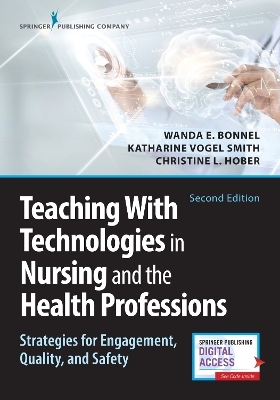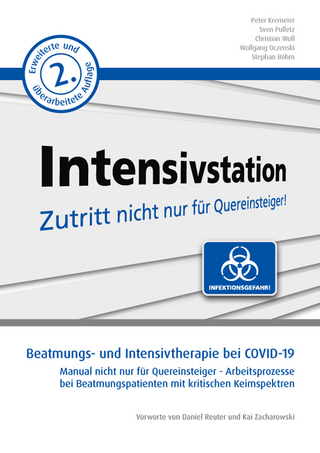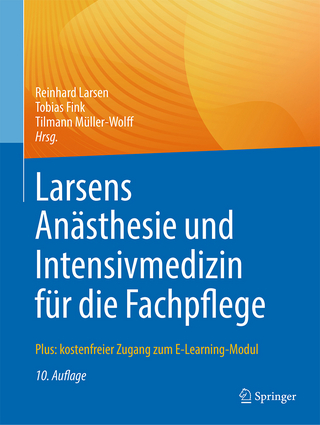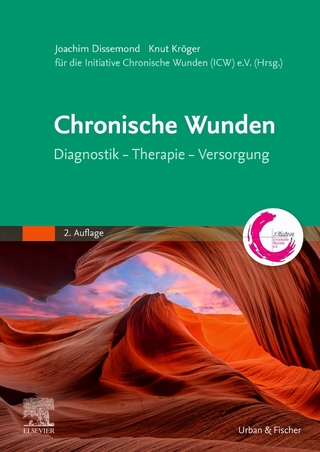
Teaching with Technologies in Nursing and the Health Professions
Springer Publishing Co Inc (Verlag)
978-0-8261-4279-5 (ISBN)
Praise for the First Edition:
“This is an excellent resource, highly recommended for new and seasoned educators at every level.”
--Nursing Education Perspectives
Written for new and aspiring nursing faculty, this unique book delivers broad teaching principles alongside strategies for selecting the best technology. New generations of students are increasingly familiar with technology, and require educators who can add to their skills and shape them with a specific health care focus. Faculty have a responsibility to help their students prepare for the workforce, one that increasingly relies on high technology to operate. The teaching principles discussed in this text illuminate the changing technologies used in education and practice, and provide strategies for selecting the best technology to obtain a specific learning objectives, assignments, and outcomes.
Teaching with Technologies in Nursing and the Health Professions, Second Edition has been substantially revised to reflect changes within our health care system and includes two completely new chapters. Founded upon the Integrated Learning Triangle for Teaching with Technologies, a central organizing tool for lesson planning and decision-making, concepts throughout the text link to key quality and safety issues, population and public health exigencies, and systems approaches to care. Each chapter contains case examples, self-assessment tools, quick teaching tips, evidence-based review abstracts, Q&As answered by noted practice experts, and online resources for further learning.
New to the Second Edition:
New Chapter: Discusses the technology leader’s role in mentoring, promoting curriculum changes, and partnering with colleagues in diverse contexts, including staff development
New Chapter: Addresses engaging patient and population needs in health promotion and using in-home technologies such as telehealth
Increased focus on Quality and Safety Education in Nursing (QSEN) competencies
Addresses students’ needs in the Nurse Educator MSN course
Instructor’s Guide and PowerPoint slides
Key Features:
Provides strategies for teaching both with technology and about technology
Uses the Integrated Learning Triangle to guide decision-making
Discusses applications specific to online, classroom, and clinical teaching technologies
Includes teaching and leadership tips
Aligned with AACN’s Essentials of Master’s Education in Nursing
Wanda Bonnel, PhD, APRN, ANEF, is faculty emeritus at the University of Kansas School of Nursing, Kansas City, Kansas. She is a fellow of the National League for Nursing Academy and recipient of numerous awards, including both the Distinguished Nursing Alumna Award and the Chancellor’s Distinguished Teaching Award at the University of Kansas. Dr. Bonnel has received multiple funded grants, including the Health Resources and Services Administration (HRSA) online Health Professions Educator Certificate program. She has published numerous peer-reviewed abstracts and articles in geriatric and educator specialty journals, including Clinical Advisor and Journal of Professional Nursing. In addition to this text, she coauthored the textbook Teaching Technologies in Nursing and the Health Professions (2019). As a specialist in geriatrics and nursing education, she has taught courses in the master’s, DNP, and doctoral programs, including advanced clinical residency and project courses for DNPs. Her ongoing research interests include online learning best practices and advanced practice mentoring. Katharine V. Smith, PhD, RN, is associate professor emeritus at the University of Missouri Kansas City School of Nursing and Health Studies. Dr. Smith has received multiple grants, most of which have focused on aspects of teaching, advanced education, and nursing traineeships. Recent scholarship includes peer viewed publications and national presentations on the use of simulation to teach legal and ethical content. She has also coauthored the textbook Teaching Technologies in Nursing and the Health Professions (2019). Dr. Smith has taught in both undergraduate and graduate nursing programs, facilitating advanced clinical projects through the early conceptual phases. Christine L. Hober, PhD, RN-BC, CNE, is a professor at Fort Hays State University, Hays, Kansas.
Contents
Contributors: Contributors: Champions Question and Answer Exhibits
Contributors: Evidence-Based Review Abstracts and Case Examples
Preface
Acknowledgments
SECTION I: CONCEPTS FOR TEACHING AND LEARNING ACROSS DIVERSE TECHNOLOGIES
1 Teaching and Learning With Technologies for Safe, Quality Care
2 Keeping Up With Changing Technology, Quality Improvement, and Lifelong Learning
3 Models and Theories for Teaching and Learning With Technologies: Systems, Populations, Quality, and Safety Focus
4 Technology Teaching and Learning: Engaging Assignments and Lesson Plans
5 Evidence-Based Practice: Gaining and Using the Evidence With Technology
SECTION II: FACULTY AS LEARNING FACILITATORS WITH TECHNOLOGY
6 Creating Learning Teams: Basics for Safe/Effective Communication
7 Technology, Social Spaces, and Teaching and Learning Strategies to Build the Learning Community
8 Applied Technologies Assignments: Engaging the Learner for Quality and Safety
9 Engaging the Learner With Technologies for Feedback, Debriefing, and Evaluation
SECTION III: DIVERSE CLINICAL PRACTICE AND EDUCATIONAL TECHNOLOGIES
10 Online Education: Maximizing the Opportunities for Learning Populations and Systems Care
11 Hybrid Learning: The Changing Classroom and Technology to Promote Quality Care
12 Simulation: Creating Safe Environments for Learning Patient Care
13 Informatics: Teaching Clinical Data Management for Populations and Systems Health
14 Technology and Clinical Teaching and Learning: Creating a Culture of Safety
15 Engaging Patients and Families for Safe, Quality Patient Care With Technology
16 Special Contexts for Educational Leadership With Technology
17 Into the Future: Nurse Educators, Teaching Technologies, and Self-Directed Lifelong Learning
Appendix A: New Technology Readiness Inventory
Appendix B: Integrated Learning Triangle for Teaching With Technologies
Index
| Erscheinungsdatum | 01.08.2018 |
|---|---|
| Zusatzinfo | 5 Illustrations |
| Verlagsort | New York |
| Sprache | englisch |
| Maße | 178 x 254 mm |
| Themenwelt | Pflege ► Fachpflege ► Anästhesie / Intensivmedizin |
| ISBN-10 | 0-8261-4279-6 / 0826142796 |
| ISBN-13 | 978-0-8261-4279-5 / 9780826142795 |
| Zustand | Neuware |
| Haben Sie eine Frage zum Produkt? |
aus dem Bereich


